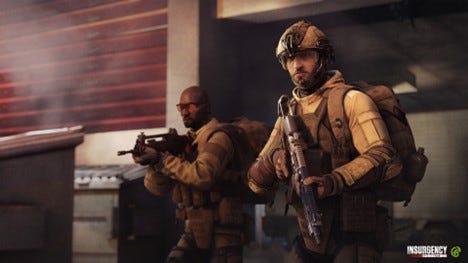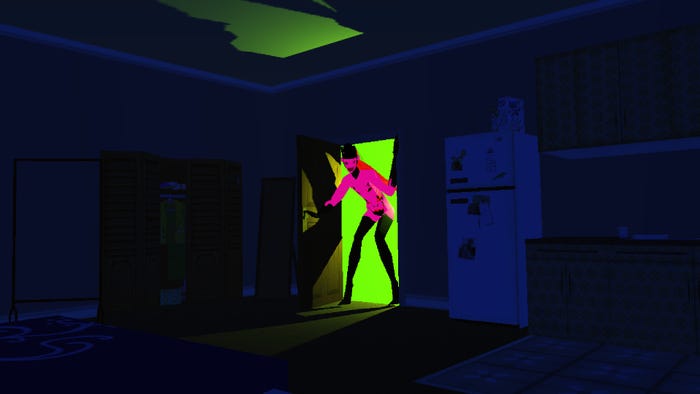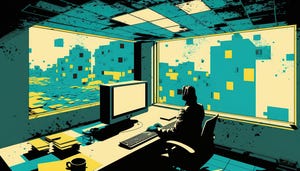Gamified Living: Education
Game Design is everywhere. This series will explore the correlation between game design practices and theory relating to various personal, social, and professional aspects of our everyday lives and professions, and examine its beneficial applications.

Don’t mess with me, I’m a Game Designer. This is a mantra I like to keep in my vernacular to embrace the challenges I might face personally, professionally, politically, creatively, and any other facets that cover the gamut of life experiences. If we consider the primary, and most simplified description of a game designer as one who can create, and deconstruct unique challenges from the perspective of a talented problem solver, we can begin to uncover the broad benefits of such an important skill. This series will explore the correlation between game design practices and theory as it relates to various personal, social, and professional aspects of life.
Part I: Education
Gamifying the Student Experience

Let me begin by exploring the experience of education, after all, we are, or have been students of formal academia and/or vocational training in one form or another, and there is no escaping being students of life. As a college instructor of Video Game Art & Design, I use the concept of game design to explain and encourage the academic experience that my students can expect. I realize when the first semester begins, that I have a classroom full of gamers; they’re fans of puzzle solving activities, immersive interactive adventures, and the social synergy of multiplayer experiences. They aspire to thrive in at least one of the disciplines that make up the ingredients of the game development team, but the idea of schooling can be intimidating, even foreign if their previous academic experience in high school wasn’t taken too seriously. So I put it in terms they understand and appreciate, and maybe even find a familiar form of motivation.
 I lay out their journey as a set of levels, not semesters. With each new semester they have essentially “leveled up” and applying their acquired knowledge like a Mass Effect skill tree, readying them for the incremental level of expectation that unfolds. Each level (semester), presents its own story arc that delivers the exposition of learning content; the rising action of exercises and assignments; the climax of a major project or exam; and the dénouement of submission, celebration, and finally, closure.
I lay out their journey as a set of levels, not semesters. With each new semester they have essentially “leveled up” and applying their acquired knowledge like a Mass Effect skill tree, readying them for the incremental level of expectation that unfolds. Each level (semester), presents its own story arc that delivers the exposition of learning content; the rising action of exercises and assignments; the climax of a major project or exam; and the dénouement of submission, celebration, and finally, closure.
I explain that their grades are experience points, a consistent accumulation of  achievements that they are required to meet in order to progress to the next level. When you’re a level 7 character in The Witcher 3, there are a lot of skills to acquire before taking on a level 30 monster, and the same concept applies to student studies through prerequisite accomplishments. I often joke that I, as the instructor, am the final boss they need to defeat, but then share the reality that I play the role of the messenger, mentor, and even keep them entertained as the trickster in their academic story. (Yes, that's me as Sub-Zero)
achievements that they are required to meet in order to progress to the next level. When you’re a level 7 character in The Witcher 3, there are a lot of skills to acquire before taking on a level 30 monster, and the same concept applies to student studies through prerequisite accomplishments. I often joke that I, as the instructor, am the final boss they need to defeat, but then share the reality that I play the role of the messenger, mentor, and even keep them entertained as the trickster in their academic story. (Yes, that's me as Sub-Zero)
When I approach them with this analogy, the intimidation of education can be minimized and appear a welcome challenge full of engaging characters, invested narrative, and fantastic rewards. It is their confidence that sees the most impressive boost because their academic journey can appear more fun and achievable; many take pride in their gaming skills and they realize they can put them to good use. It also helps that their instructor seems cool and can approach the seriousness of education with gamified concepts of fun and play.
Gamifying the Role of the Instructor
While the role of an instructor can be quite diverse, depending on the subject of study, there are fundamental responsibilities that are shared across the board. These components include communication, content development, organizational delivery, assessment, and program development. Laying out these elements of education are almost identical to the process of game design and, artistically thinking, developing pillars of theme. Basically, we need to identify the main goals of the mission, figure out what tools and information are needed to achieve those goals, decide the best way to communicate the information, plan the navigation of learning content, and design an appropriate scoring system.
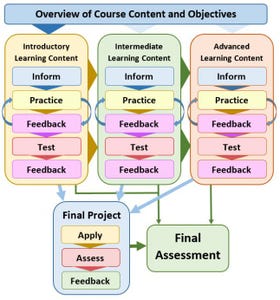
The most obvious system structure to be applied is the hierarchy of content (level design), ensuring that the pacing and relevance of information is delivered in an appropriate order to ensure student (player) success. Through conceptualization, an instructor and/or program developer needs to establish the main objectives and the processes required to meet them. All the necessary resources need to be researched, analyzed, and applied within the learning content. What is a game without a tutorial system? It’s not just about providing students and players with a bunch of tools and a world to explore, it is necessary to explain how to accomplish these goals and leave some room for self-direction and the discovery of applied knowledge.
Communication in the classroom is now embracing 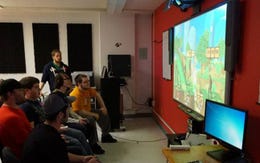 technology and becoming much more interactive. Using educational games, simulation, and smartboard activities become the minigames of the mission, constructivist engagement that applies the practical “doing” element that separates games from other forms of media. Using demonstrations, lectures, and videos, are reflective to the uses of cinematics and scripted events in game design. These become formal deliveries of information that are essential to a student’s understanding, and serve as a form of guidance.
technology and becoming much more interactive. Using educational games, simulation, and smartboard activities become the minigames of the mission, constructivist engagement that applies the practical “doing” element that separates games from other forms of media. Using demonstrations, lectures, and videos, are reflective to the uses of cinematics and scripted events in game design. These become formal deliveries of information that are essential to a student’s understanding, and serve as a form of guidance.
 The scoring system is the most important, as it is the measurable component of a student’s progression and level of ability. It is vital to ensure that tasks are weighted appropriately; that risk vs. reward is fair and balanced; and that students can have the ability to learn from mistakes, respawn, and improve upon their performance. Like strategic gamers, students often want to know the breakdown of the assessment to prioritize their efforts and to meet optimal levels of success throughout the course. Where a game might provide a hierarchical list of primary, secondary, and bonus objectives that deliver a certain amount of points or rewards, a grading rubric can offer a similar form of expectation and guidance.
The scoring system is the most important, as it is the measurable component of a student’s progression and level of ability. It is vital to ensure that tasks are weighted appropriately; that risk vs. reward is fair and balanced; and that students can have the ability to learn from mistakes, respawn, and improve upon their performance. Like strategic gamers, students often want to know the breakdown of the assessment to prioritize their efforts and to meet optimal levels of success throughout the course. Where a game might provide a hierarchical list of primary, secondary, and bonus objectives that deliver a certain amount of points or rewards, a grading rubric can offer a similar form of expectation and guidance.
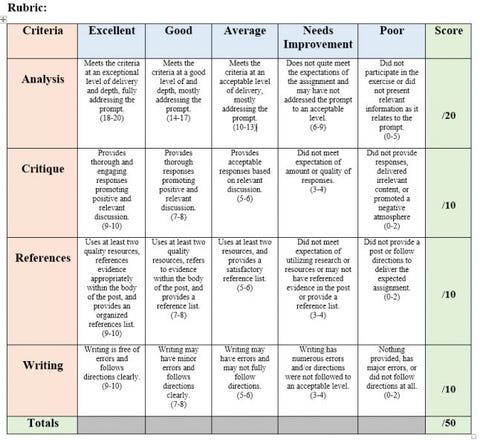
Games also commonly provide feedback systems, such as the Call of Duty franchise, presenting players with a summary of their accomplishments. Academic feedback is no different, identifying strengths and weaknesses of a student’s efforts while remaining positive to ensure they keep on playing the academic game and continue pursuing a successful path to completion.

Summary
While these concepts, and the analogy comparison of education, only touch on the basic fundamentals of game design, we can see the deeper narrative developing. Experienced designers and, in this case, experienced educators, can likely see these surface level comparisons and derive how the more advanced elements of game design can apply to the complexities of the field of education. If we can apply a more gamified approach to teaching and learning, and the institution of education as a whole, we might find that concepts of fun and play are key components in shaping the minds of tomorrow.
This is just Part I of this series of Gamified Living and future entries will apply the concepts of game design to the fields of business, psychology, sociology, health and wellness, politics, law, construction, and likely more in order to demonstrate the vast applications of game design practices and theory to our everyday lives and professions.
Written by Gregory Wells
Read more about:
BlogsAbout the Author(s)
You May Also Like




